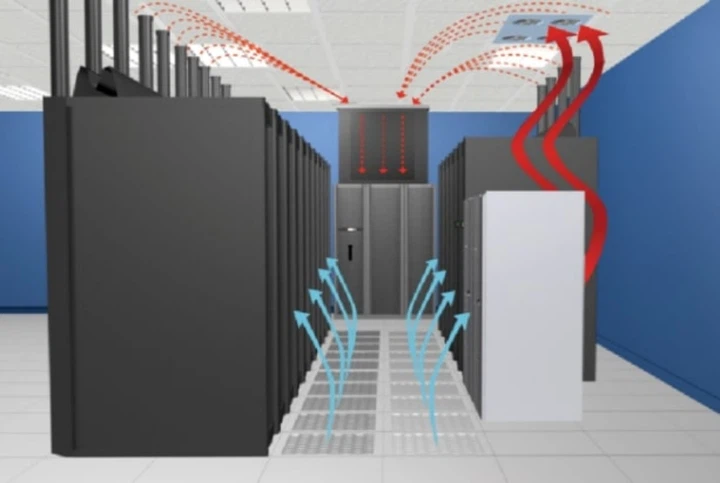How the cooling system in a data center works
The cooling system is crucial for the reliability of data centers. If the temperature in the data center exceeds the range that the equipment can withstand, the equipment may overheat and cause malfunctions. The cooling system of IDC (Internet Data Center) ensures that the temperature of operating equipment is maintained at an ideal level through engineering design and thermal management of information technology (IT) equipment. These systems use air cooling, liquid cooling, or a combination of both, utilizing principles of heat transfer, fluid dynamics, and heat exchange to lower the internal temperature of data centers, improve equipment stability and efficiency.

IDC's air cooling system mainly relies on computer room air conditioning (CRAC) and computer room air processors (CRAH). The CRAC unit is responsible for refrigeration, while the CRAH unit regulates temperature and humidity by cooling the liquid. These units are usually arranged along the cabinet rows, forming hot and cold channels, effectively directing cold air to the front of the server and expelling hot air from the rear. In order to improve the efficiency of air cooling, the data center has designed a precise air flow management scheme. Including the use of isolation techniques, such as cold and hot channel isolation, to avoid mixing of cold and hot air and improve cooling efficiency. In addition, by optimizing the layout of the data center and the placement of racks, it ensures smooth air flow and avoids the generation of hotspots.

Liquid cooling systems absorb and transfer heat by directly or indirectly using cooling liquids (such as water or special cooling liquids), and have the characteristics of efficient heat transfer and precise control. This method can be divided into two categories: direct liquid cooling and indirect liquid cooling. Direct liquid cooling means that the cooling liquid comes into direct contact with the heat generating components. It includes full immersion cooling, which means electronic devices are completely immersed in non-conductive liquids. This method greatly improves cooling efficiency and can significantly reduce energy consumption. Indirect liquid cooling systems come into contact with equipment through cooling plates or heat pipes, and the coolant flows in a closed loop system, eliminating heat through a heat exchanger. This method is suitable for centralized cooling and processing of heat in high-density equipment areas.

Natural cooling, also known as free cooling, utilizes low-temperature air or water resources from the outside to directly cool data centers, rather than using traditional refrigeration machinery. This method is energy-saving and environmentally friendly, especially suitable for areas with colder climates or abundant cold water sources. The methods for achieving natural cooling include but are not limited to using an economizer, which allows external cold air to flow directly into the data center under appropriate conditions. In addition, water source cooling utilizes low-temperature water from lakes, rivers, or other natural water sources for heat exchange. These methods typically coexist with traditional cooling systems, automatically switching based on climate conditions to achieve optimal energy efficiency.

With the improvement of intelligence in data centers, intelligent cooling management systems have become the key to improving cooling efficiency. By installing temperature and humidity sensors, real-time monitoring of the data center environment and equipment conditions, the intelligent system can automatically adjust the operating status of cooling equipment, achieving optimal energy allocation. Intelligent cooling management identifies hot areas in the data center through data analysis, automatically adjusts fan speed and air conditioning output, and adjusts the flow and temperature of cooling water to ensure uniform cooling of the environment in the data center. Meanwhile, this management approach can be integrated with the energy management system (EMS) of the data center, further optimizing overall energy consumption and achieving higher energy efficiency.

With the advancement of technology and the improvement of environmental protection awareness, IDC data center cooling systems are developing towards a more efficient and environmentally friendly direction. By combining artificial intelligence and big data analysis, the future IDC cooling system will become more intelligent and automated, achieving higher energy efficiency and lower environmental impact. These advancements not only help reduce operating costs, but also contribute to addressing the increasingly severe global climate change challenges.






